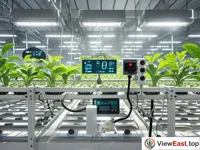
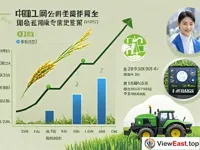
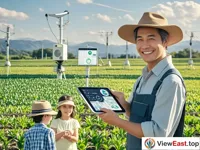
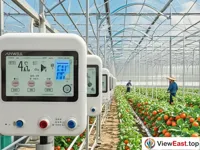
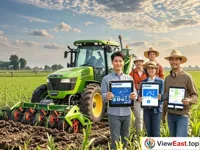

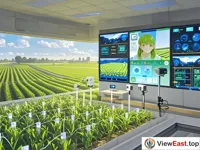

In the vast expanse of China's land, a quiet revolution is underway. The protagonist of this revolution is artificial intelligence technology, which is changing the face of Chinese agriculture at an unprecedented speed and scale. From the precise spraying of drones to the widespread application of intelligent agricultural machinery, from the precise decision-making of big data to the full-process monitoring of the Internet of Things, Chinese agriculture is undergoing a revolutionary upgrade in precision.
1. Rapid Advancement in Agricultural Technology
Since the founding of the People's Republic of China, agricultural science and technology have developed rapidly. Since the 18th National Congress of the Communist Party of China, China has accelerated the realization of high-level self-reliance in science and technology, cultivated and developed new quality agricultural productive forces, and the cause of agricultural science and technology has developed rapidly. The innovation system is more complete, and innovation capabilities have significantly increased. By 2023, the national agricultural scientific and technological progress contribution rate was 63.2%, an increase of 8.7 percentage points compared to 2012. The problem of "neck pinching" in core seed sources has been alleviated, with the self-sufficiency rate of core livestock and poultry seeds exceeding 75% and that of aquatic products exceeding 85%. The coverage rate of good crop varieties exceeded 96%, contributing 45% to grain production.
2. Continuous Improvement of the Agricultural Operation System
In recent years, China's new types of agricultural business entities have been growing and strengthening, with steady improvements in quality and efficiency, and a continuous enhancement of service and driving effects. As of the end of October 2023, nearly 4 million family farms were included in the national family farm directory management, and the number of legal units in agriculture, forestry, animal husbandry, and fishery reached 2.5 million. More than 1.07 million organizations have carried out agricultural socialization services, with a service area exceeding 197 million mu, and more than 91 million small farmers have been served.
3. Rapid Development of New Production Models
With the continuous improvement of agricultural modernization, new types of agricultural production models represented by facility agriculture are developing rapidly. China's facility agriculture has been expanding in scale year by year, with a richer variety of products and continuously improving industry benefits. In 2022, China's facility planting area reached 42.7 million mu, accounting for more than 80% of the world's total facility agriculture area, making it the world's largest facility agriculture country.
4. Comprehensive Improvement of Smart Agriculture
Smart agriculture has become an important driving force for the modernization and transformation of agricultural production. Promote precision in major crop cultivation by integrating and applying technologies such as "four conditions" monitoring, precise water and fertilizer application, intelligent agricultural machinery and equipment, unmanned aerial vehicles, and intelligent decision-making systems to improve the precision of plowing, sowing, managing, and harvesting. Promote the digitization of facility planting by accelerating the promotion of domesticated full-process intelligent control systems, integrating and applying technologies and equipment such as crop growth monitoring, environmental precise regulation, water and fertilizer comprehensive management, and operation robots.
5. Chinese Practice of Precision Agriculture
Pinduoduo, as an e-commerce platform deeply engaged in agriculture, has always adhered to the long-term strategy of taking root in agriculture and insists on applying digital technologies such as artificial intelligence and big data to the agricultural industry chain. Professor Li Daoliang, Dean of the International College of China Agricultural University, pointed out that digital agriculture should achieve the digitization of all elements of agricultural production, including the digitization of production environment, cultivation objects, equipment,菌群, and energy, making agriculture move from experience to science.
6. AI Empowerment of Modern Agriculture
AI technology, especially branches such as machine learning, deep learning, and natural language processing, is profoundly affecting all aspects of agriculture, from seed breeding to crop growth, from pest and disease control to agricultural product processing, all reflecting the power of technology. With drones equipped with high-definition cameras and multispectral sensors, real-time acquisition of field crop growth conditions and soil moisture can be achieved. Combined with weather forecasts and satellite remote sensing data, AI can accurately predict the water and fertilizer needs of crops and guide farmers to make the best decisions.